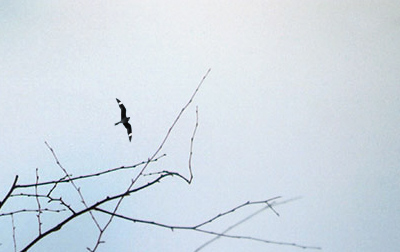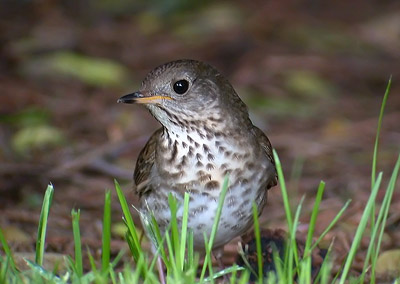
I recently received a letter from WSO stating that my April 3rd, 2007 observation of a nighthawk at Pheasant Branch Conservancy was accepted as "nighthawk species." I suppose that's more than fair considering I never submitted anything. Still, I'm a little curious what the records committee might have considered. Because the observation was so brief, separating Lesser Nighthawk from Common Nighthawk would have been next to impossible and I doubt anyone could have done it. Any argument and supporting evidence had to be made after the fact, but I just kept putting it off.
Consider the following two photographs:
Labeled as Lesser Nighthawk
Labeled as Common Nighthawk
That's pretty tough, isn't it?
The argument for Lesser Nighthawk necessitates accepting a vagrant bird. An April 3rd sighting is reinforced by overall earlier departure dates (versus Common Nighthawk) from their wintering grounds. Some records exist for Lesser Nighthawks in Colorado and Oklahoma during the month of April. Though there are no confirmed Lesser Nighthawk sightings in Wisconsin, the species was once recorded in Ontario in 1974. Thus, Wisconsin is in within a theoretical range of a one-time documented vagrancy.
Arguing for Common Nighthawk is that Wisconsin lies within its normal geographical range, though exceptionally early (April 3rd). However, in support of this are three previous records prior to April 14th in Wisconsin, April 1st, 11th and 13th. (I wonder how these birders were able to separate Common from Lesser?) There are also established early dates for Common Nighthawks present in Texas and Oklahoma during the month of February, giving an early bird plenty of time to reach Wisconsin by April 3rd.
It basically breaks down to accepting a record early versus a geographical vagrant. Based on the above, I think it's much more reasonable to conclude that unusually warm spring weather coupled with strong southwest winds during night of April 2nd helped push a Common Nighthawk into southern Wisconsin. Incidentally, the April 1st, 1995 record was also in Dane County (where I live). Introducing a Lesser Nighthawk vagrant, while not impossible, seems reasonably unnecessary. Just as it would be unnecessary to introduce the possibility of Bicknell's Thrush whenever a birder reports a Gray-cheeked Thrush during spring or fall migration. Come on. Who in Wisconsin is seriously looking for Bicknell's Thrush? But if they can make it to the north side of Lake Erie, perhaps Bicknell's in Wisconsin isn't that far-fetched?

I think it's fair WSO embraced the record as "nighthawk species," though it seems to favor a slight bias for vagrancy. Vagrancy, early or late, during migration might represent a general assumption, but I'll wager it's much easier to find a vagrant when there are fewer birds to sift through. Do you think this level of species separation and scrutiny should continue throughout spring or fall migration? Objectively, shouldn't we be looking for Lesser Nighthawks and Bicknell's Thrushes throughout spring and fall? During the apex of Common Nighthawk migration, should I spend time scrutinizing every single Common Nighthawk that flies over because of the possibility of Lesser Nighthawk mingling in a flock? Throughout May and September, should I exhibit healthy skepticism regarding every Gray-cheeked Thrush I see?
All images © 2007 Mike McDowell

















